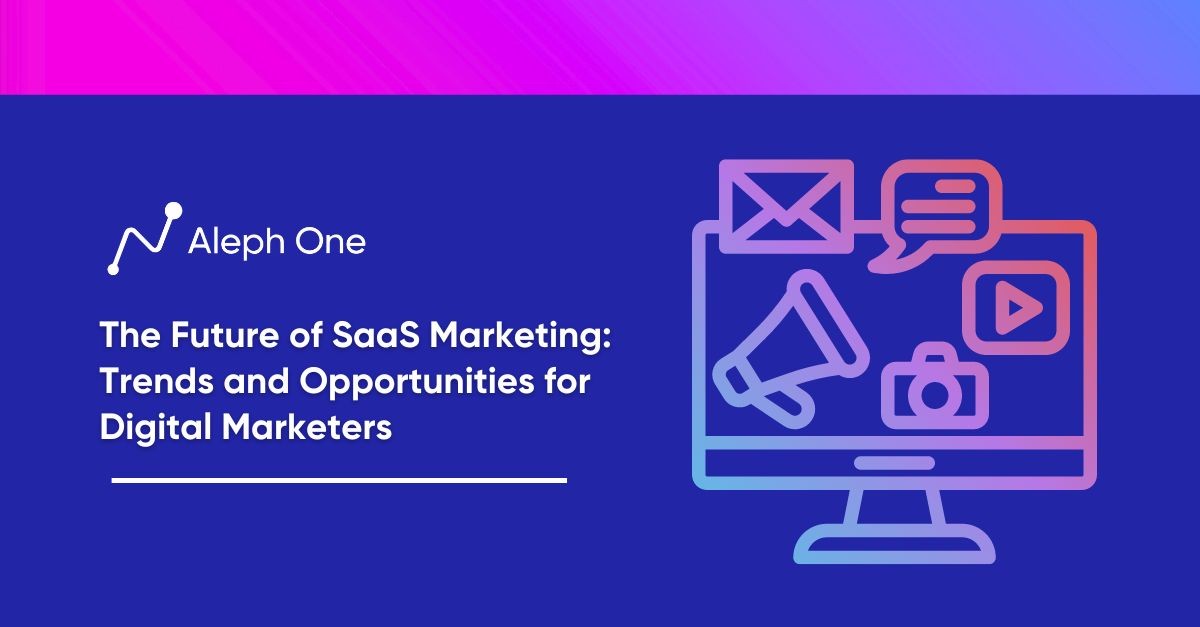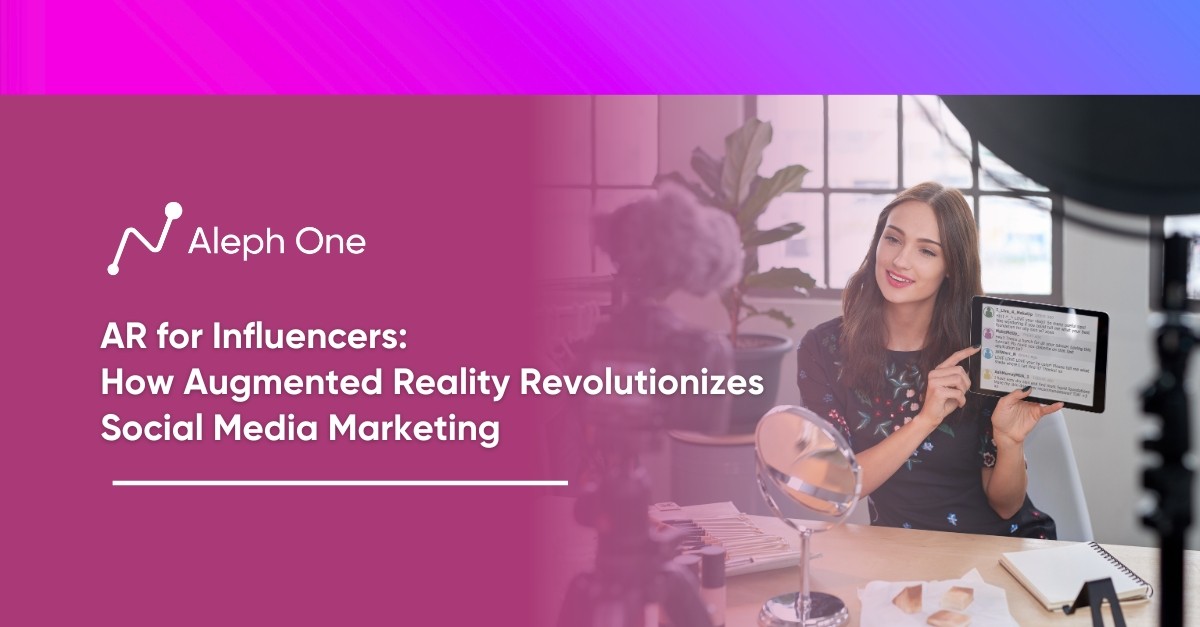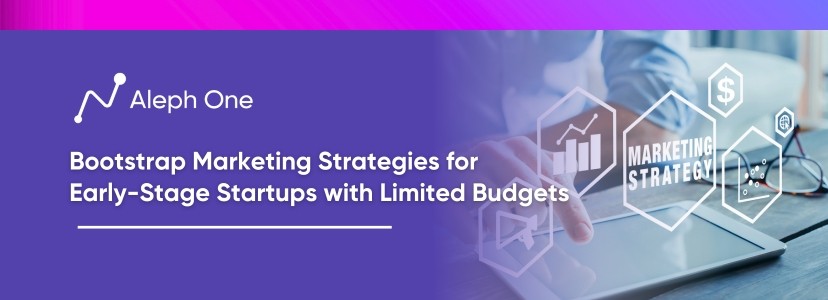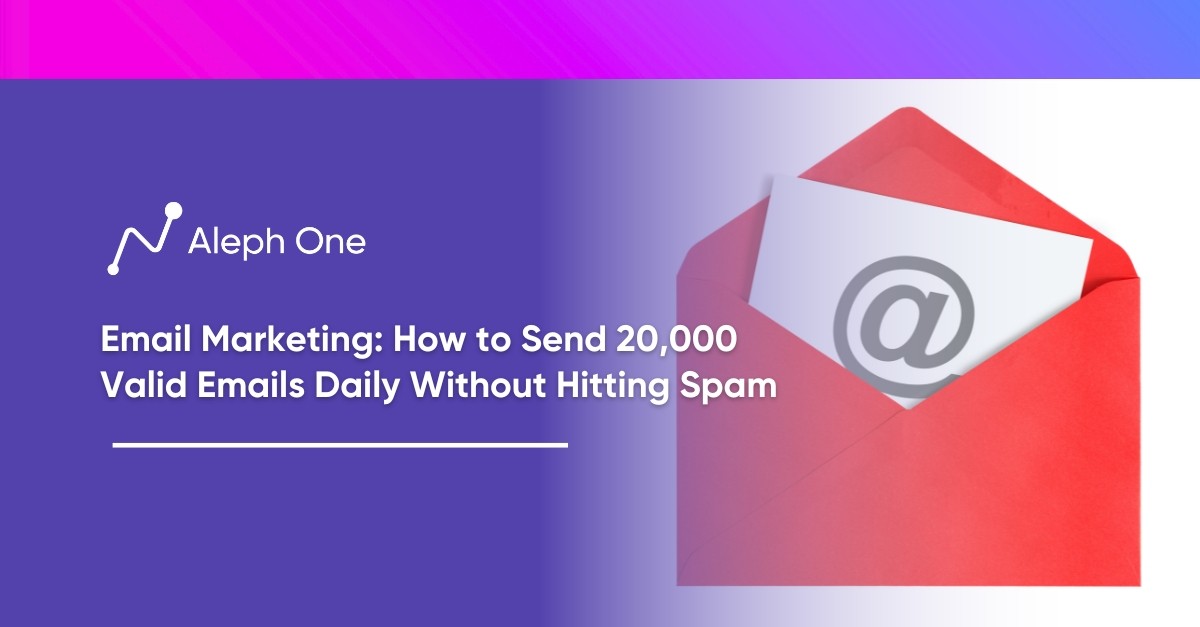Let’s work together to build something amazing. Share your project details and our team will reply to figure out the next steps to your success.

As the digital marketing landscape evolves, SaaS companies must stay ahead of the curve and embrace emerging trends. This article will explore four key areas that hold significant potential for SaaS marketers: native advertising, video marketing, chatbots and AI, and a customer-centric mindset. Native advertising offers a more engaging way to reach customers, with higher click-through rates and lower costs per lead than traditional ads. Video marketing, especially explainer and customer testimonial videos, drive growth by capturing attention, increasing conversions, and building trust. Chatbots and AI automate lead generation and engagement, enabling SaaS companies to generate more leads at a fraction of the cost and enhance the customer experience. Finally, adopting a customer-centric mindset is non-negotiable for SaaS success, leading to higher satisfaction, retention, and revenue growth. By leveraging these trends and opportunities, SaaS marketers can position themselves for sustainable development and competitive advantage in the evolving digital landscape.

The Rise of Native Advertising: Why SaaS Companies Need to Pay Attention
Native advertising is one of the fastest-growing digital marketing channels, with spending projected to reach $53 billion by 2023. For SaaS companies, native ads—like promoted social media posts, sponsored content, and in-feed ads—should be a key focus. Studies show that customers view native ads 53% more than traditional display ads. And SaaS companies that incorporate native ads see higher click-through rates, lower costs per lead, and increased brand lift compared to other digital ads.
Reaching Customers in a More Engaging Way
With the rise of ad blockers and banner blindness, native advertising allows SaaS brands to reach customers more engagingly. Platforms like Facebook, Instagram, LinkedIn, and Twitter all offer native ad options that match the form and function of the user experience. These ads appear in the normal scroll of the feed, seamlessly blending in while still being marked as “sponsored.”
Higher Rate of Clicks, Impressions, and Conversions
Because native ads match the visual design of the surrounding content, they capture attention more effectively than banner ads and other traditional formats. This can translate to a higher volume of clicks, impressions, and conversions for SaaS companies. According to recent research, native ads see click-through rates of 0.20%, compared to just 0.07% for display ads. They also have viewability rates over 50%, whereas most banner ads are not even seen.
Impressive Lead Generation Power
The lead generation power of native advertising is also compelling for SaaS brands. Studies show that customers who click on native ads are three times more likely to complete a purchase compared to those who click on banner ads. For SaaS companies, this can mean lower cost per lead and higher quality leads that are more likely to convert to customers.
Native Advertising – A Trend That Can’t Be Ignored
With ad blocking usage increasing and digital marketing becoming more cluttered, native advertising is a trend that SaaS companies cannot ignore. By allocating more budget to native ads, SaaS brands can improve click-through rates, drive more high-quality leads, increase brand awareness, and ultimately boost customer acquisition in a big way. For sustainable growth, native advertising should be crucial to any SaaS company’s marketing mix.
The Power of Video: How Explainer Videos and Customer Stories Drive Growth
Video marketing is essential for SaaS companies to engage customers and drive growth. Specifically, explainer videos and customer testimonial videos should be a key focus for SaaS marketers.
Captivating Audiences and Boosting Conversions
Explainer videos are short, animated videos that explain your product or service benefits customers. They are proven to capture attention and increase conversion rates. Studies show explainer videos can increase conversion rates by 20% or more. When customers understand the value of your offering, they are more likely to sign up or purchase. Explainer videos are also highly shareable, which expands your reach and increases brand awareness.
The Power of Customer Testimonial Videos
Customer testimonial videos, also known as customer success stories, build trust and credibility. They feature real customers talking about their experience using your product and their impact on their business. According to research, customer testimonials have the highest effectiveness rating of any content for influencing purchasing decisions.
Accelerating Growth with Video Marketing
SaaS companies leveraging video power, especially explainer and customer testimonial videos, are seeing faster growth and better results. According to Animoto, SaaS and tech companies using video marketing have seen 49% more immediate revenue growth year over year than those without video. They also achieve 41% higher web traffic from search than non-video users.
Developing a Robust Video Marketing Strategy
With video dominating social media and search platforms, it has never been more critical for SaaS companies to develop a robust video marketing strategy. Explainer and customer testimonial videos are proven to increase engagement, build trust, and drive conversions. They allow you to show rather than tell potential customers why they need your product. Used effectively, video can be the engine for exponential growth. The future of SaaS marketing is video—and the time for SaaS companies to invest in video is now.
Chatbots and AI: Automating Lead Generation and Engagement
Artificial intelligence and chatbots are transforming how SaaS companies engage with and sell to customers. In 2023, the AI market is projected to reach $6.2 billion, and chatbots are one of the critical applications of AI for SaaS businesses. Chatbots can automate up to 80% of sales and marketing interactions, generating up to 5 times more leads at a fraction of the cost.
The Power of Chatbots
For example, Anthropic, an AI safety startup, used chatbots to schedule over 600 sales calls and generate $1.3 million in the pipeline in just three months. The chatbots could have thousands of conversations simultaneously, qualifying leads and booking sales calls around the clock. While an impressive result, poor chatbot experiences can damage customer trust and retention.
Enhancing the Customer Experience and Building Brand Loyalty
SaaS companies must invest in high-quality chatbots to benefit from automation. Chatbots need to have natural and helpful conversations, not screen customers in and out. They should provide value to customers through conversation. Chatbots can make customers feel heard and supported.
Some best practices for chatbots include:
- Focus on the customer experience: Map out the customer journey to understand pain points and opportunities to delight customers. Provide helpful information and recommendations, not just screening questions.
- Continuously improve: Monitor chatbot conversations to see where customers struggle and drop off. Get customer feedback and make improvements to serve them better. AI and natural language processing allow chatbots to get smarter over time.
- Seamlessly hand off to humans: For complex issues or when customers request to speak to a person, have a smooth handoff process to a sales or support rep. This combines the efficiency of automation with the human touch.
- Be transparent: Let customers know they are talking to a chatbot. Trying to pass off a chatbot as a human can damage trust and credibility. Customers will appreciate the honesty and have more realistic expectations of the interaction.
- Protect customer data: Take security and privacy seriously. Have clear data usage policies and obtain customer consent before storing or using personal information gathered by your chatbots.
With a strategic, customer-centric approach, chatbots and AI can be a huge competitive advantage for SaaS companies. But they must be implemented responsibly and with the customer experience in mind to be truly impactful. Chatbots can revolutionize how SaaS businesses attract, engage, and retain their customers.
A Customer-Centric Mindset: Why It’s a Non-Negotiable for SaaS Success
Focusing on customer experience is no longer optional in today’s competitive SaaS landscape. With more and more companies offering similar products and services, customer experience is becoming the key differentiator for SaaS businesses. Companies prioritizing customer-centricity see higher satisfaction, retention, and revenue growth.
Maximizing Value with Tailored Strategies
SaaS companies need to focus on personalizing the customer journey at every touchpoint. Strategies like personalized onboarding, customer success programs, and customer advisory boards have been shown to increase customer lifetime value by up to 400%. Personalized onboarding, where customers are guided through an onboarding process tailored to their needs, makes them feel valued from day one. Customer success programs, with dedicated CSMs providing proactive outreach and increasing retention by up to 5 times. Customer advisory boards give SaaS companies direct feedback to build a product customers truly want.
Cultivating a Customer-Centric Culture
A customer-centric culture starts from within. SaaS companies need to empower and incentivize employees to focus on the customer. When the entire organization is dedicated to understanding and meeting customer needs, it leads to a superior experience. SaaS companies with a customer-centric culture see 60-100% higher customer satisfaction and retention rates. They are also able to charge a premium for their services.
The Payoff of Prioritizing the Customer
The benefits of a customer-centric approach are clear. SaaS companies that improve customer experience see an average revenue increase of 15-20% within a year. By reducing churn and increasing customer lifetime value, even minor improvements in customer experience can translate to substantial revenue gains. Over time, a customer-centric company builds a loyal customer base that acts as advocates, driving further growth through word-of-mouth and referrals.
Focusing on customer experience needs to be a non-negotiable for SaaS companies looking to succeed. SaaS companies can achieve transformational business results by personalizing the customer journey, fostering a customer-centric culture, and continuously optimizing the experience. The future is customer-centric, and SaaS companies must shift now to stay competitive.
Freemium is the Future: How to Drive Explosive Growth with Product-Led Strategies
The freemium business model, where a product’s basic features are free to use, is becoming dominant in the SaaS space. Around 61% of SaaS companies now offer free trials or freemium versions of their product. When done right, the freemium model can drive exponential growth for SaaS companies.
Providing Value and Guiding the Upgrade
Slack is a prime example of a SaaS company that has leveraged the freemium model to fuel explosive growth. Using a freemium model, Slack grew from 0 $200 million in annual recurring revenue in just two years. They provided a free version of their product packed with value for teams, gaining viral adoption. This got customers hooked on the product, and Slack then upsold them to paid plans as their needs grew.
The Key to Freemium Success
The key to success with a freemium model is providing enough value in the free version to quickly gain new customers, then having a clear upgrade path to paid plans. The free version should solve a real pain point for customers and engage them with your product. However, it needs to be limited enough that customers will see the need for a paid plan as they expand their product use.
Leveraging Habit Formation and Network Effects
SaaS companies should focus on features that drive habit formation and network effects for the free plan. For example, Slack’s free plan allows unlimited users and integrations, fueling viral spread and team collaboration. But more advanced features like unlimited message archives, guest access, and advanced analytics are reserved for paid plans.
Data-Driven Upgrades
Freemium also provides an opportunity to gather data on how customers use your product and see what features they value most. This can help develop the optimal feature sets and pricing for your paid plans. With a data-driven upgrade path, SaaS companies can maximize conversion rates to paid.
While the freemium model does mean giving your product away for free to some users, the potential benefits of exponential growth, data-driven upgrades, and higher lifetime value customers make it worth the investment. For SaaS companies looking to scale fast, freemium is the future. With the right product and innovative feature differentiation between plans, the freemium model can be a growth engine that fuels your business for years to come.
New Channels Emerging: How SaaS Companies Can Stay Ahead of the Curve
Emerging digital channels like voice search, streaming audio, and virtual/augmented reality create new opportunities for SaaS companies to reach and engage customers. By the end of 2023, 75% of households will have a smart speaker, and 50% of all searches will be voice searches. SaaS companies that optimize for voice search on platforms like Google Assistant, Alexa, and Siri will gain an early advantage in these voice-first environments.
Tapping Into a $7.4 Billion Advertising Opportunity
Streaming audio is another channel gaining significant momentum. In the U.S. alone, streaming audio revenue grew 42% in 2018 to $7.4 billion. Major platforms like Spotify, Pandora, and iHeartRadio now have significant advertising opportunities for SaaS brands. SaaS companies exploring partnerships, sponsorships, and native ad options on streaming audio platforms will be poised to tap into this fast-growing channel.
Embracing Virtual and Augmented Reality
Virtual and augmented reality will also disrupt digital marketing in the coming years. While nascent, the VR/AR ad market is projected to generate $1.5 billion in brand investment by 2022. SaaS companies that now start testing VR and AR marketing—like interactive branded games and experiences, immersive 360-degree video content, and virtual pop-up shops—will gain valuable experience leveraging these channels.
The Key to SaaS Success in Emerging Channels
Regarding emerging channels, the key for SaaS marketers is to start piloting and learning now. While still relatively small revenue drivers, channels like voice search, streaming audio, VR, and AR are growing at breakneck speed. SaaS companies that allocate budget and resources to exploring these channels today will have a significant competitive advantage as they become mainstream marketing pillars in the coming years.
Gaining a Competitive Advantage
The future of SaaS marketing is all about innovation and the willingness to experiment with new technologies as they emerge. Voice, streaming audio, virtual and augmented reality—these channels will shape digital marketing for years to come. SaaS companies that take a proactive approach, testing and optimizing for new channels early, will be poised to tap into the next wave of customer engagement and experience the benefits of staying well ahead of the marketing curve. The time for SaaS brands to start piloting emerging channels is now. The future of marketing is happening today, and it’s happening fast. SaaS companies need to meet customers where they are by exploring new channels or risk getting left behind.
How do SaaS companies strategically optimize their native ad content to effectively reach their target audience and improve click-through rates?
SaaS companies can optimize their native ad content by conducting thorough audience research to create customized content that speaks directly to the target group’s needs and interests. Precisely targeted messaging and high-quality creative material that seamlessly blends with the platform’s organic content can significantly improve engagement and click-through rates. Also, testing different variations of ad creatives and copy can help identify the most effective elements, leading to more engaging and high-performing native ads.
Given the power of video content, particularly explainer videos and customer testimonials, what specific tips would you suggest for SaaS companies looking to leverage video to drive growth?
Explainer videos should be short, concise, and engaging for maximum impact, clearly demonstrating how the product solves a problem or brings value to the user. Simple language and attractive visuals can help ensure the core message is easily understood. As for customer testimonials, authenticity is key. Featuring real success stories from satisfied customers can create an emotional connection with prospective customers, build trust, and influence purchasing decisions. Promoting these videos on the right channels, such as the company’s website, social media platforms, and email newsletters, also ensures they reach the most relevant audience.
How are SaaS companies leveraging AI and Chatbots to automate lead generation and engagement effectively?
SaaS companies are deploying AI and Chatbots to automate parts of their customer service, sales, and marketing processes. They are used to respond to common inquiries, qualify leads, schedule appointments, and provide 24/7 service. AI can analyze user behavior to provide personalized recommendations and better user experiences, boosting engagement. Successful implementation involves making the interaction with chatbots as natural and valuable as possible, ensuring seamless handoffs to human representatives when needed, and continuously learning and adapting from user interactions.
Get the latest news and updates from Aleph One in your inbox.



